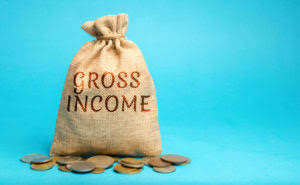
The average age of fixed assets, commonly referred to as the average age of PP&E is calculated by dividing accumulated depreciation by the gross balance of fixed assets. This ratio gives visibility into how old an organization’s fixed assets are. An older average age may indicate the organization will require reinvestment in fixed assets in the near future.
What Is a Current Asset?
RedBeam’s comprehensive fixed asset tracking solution is designed to streamline your asset management process, offering greater visibility and control over your physical assets. Our platform provides robust features, including detailed tracking and seamless integration with existing systems, for a streamlined approach to managing your fixed assets. Understanding how fixed assets function in various industries can offer valuable insights into their strategic importance. Fixed assets, such as machinery, buildings, and vehicles, what are plant assets play crucial roles across different sectors, providing foundational support and enabling long-term operational efficiency.
- While this method offers a more accurate reflection of an asset’s present value, it can introduce volatility into financial statements due to market fluctuations.
- The advantages of fixed assets include long-term utility, capital appreciation, production efficiency, and potential tax benefits through depreciation deductions.
- Tax depreciation is commonly calculated differently than depreciation for financial reporting.
- Therefore, from the above discussion, equipment will fall within the purview of the fixed asset definition.
- However, personal vehicles used to get to work are not considered fixed assets.
What are examples of fixed assets?

In addition, many ERP (enterprise resource planning) systems that automate the processes surrounding fixed assets can fall short in adaptability and reporting. While they may handle standard situations, they struggle with additional complexities. It involves adding together each year in an asset’s useful life and then using that sum to calculate a percentage representing the remaining useful life of the asset. The percentage is then multiplied by the asset’s depreciable base, cost less salvage value, to arrive at the depreciation to be recognized each period. The number of fixed assets varies for each company and depends on the size and nature of the business. GAAP refers to the accounting principles, standards, and procedures used in the United States.

Non-current assets
IFRS ensures transparency, comparability, and consistency in financial reporting across different jurisdictions. Each type of fixed asset brings unique value to a company’s operations and contributes to its long-term growth and success. Proper management and strategic utilization of these assets are vital for maximizing their potential and optimizing overall business performance. Most tangible assets, such as buildings, machinery, and equipment, can be depreciated. However, land can’t be depreciated because it cannot be depleted over time unless it contains natural resources.
How do you calculate fixed assets?
Knowing what equipment you already have and its functionality allows you to avoid unnecessary purchases, optimize your resource allocation, and prevent overspending. There are multiple ways to calculate depreciation, so it’s always useful to double-check with a tax professional when it comes to recording deductions. After only two months, Lucy begins to notice that JuiceON is not performing as it should. Despite repeated attempts to fix it and no ability to get in touch with customer support because the manufacturer has gone out of business, Lucy can’t get JuiceON back to its optimal condition. Realizing that it’s no longer useful and that she can’t get a refund, she decides to dispose of it. Initially, it seems to be a game-changer, speeding up production and adding an extra zest to her lemonade.
In every organization, current assets are pivotal in maintaining liquidity and ensuring smooth day-to-day operations. These assets, which can be converted into cash within a year, provide the necessary short-term financial support to meet immediate obligations and operational expenses. Depreciation plays a pivotal role in differentiating current and fixed assets. While current assets, such as cash or inventory, are valued at market prices and do not depreciate, fixed assets, including machinery and buildings, gradually lose value over time. This decline, known as depreciation, reflects the asset’s wear and tear, usage, or obsolescence. A fixed asset turnover ratio is an efficiency ratio used to determine how successfully a company generates sales from its fixed assets.

This ratio could also be helpful internally for budgeting and investment strategy. retained earnings balance sheet The treatment of operating lease ROU assets, however, is quite different from fixed assets and the related ROU asset is amortized using a different method. Businesses can maximize the value and efficiency of fixed assets through effective asset management, regular maintenance, upgrades, and optimization of asset utilization.
- It also benefits to have a capitalization threshold; the dollar amount in which an item is recorded as a fixed asset.
- Fixed assets are typically presented in descending order of liquidity, with the most liquid non-current assets shown first.
- Adhering to these standards not only enhances the credibility of financial reports but also aids in compliance with regulatory requirements.
- Companies can depreciate tangible assets over their lifetimes to reflect the gradual depletion of their value.
- The asset’s value decreases along with its depreciation on the company’s balance sheet to match its long-term value.
- Examples include investments or the land and building where an organization’s headquarters is located.
- Together, current assets and current liabilities give investors an idea of a company’s short-term liquidity.
These standards provide guidelines on how to record, value, and depreciate fixed assets, ensuring consistency and comparability across financial statements. For instance, IFRS requires companies to revalue their fixed assets periodically to reflect fair value, while GAAP allows for historical cost accounting. Adhering to these standards not only enhances the credibility of financial reports but also aids in compliance with regulatory https://www.bookstime.com/ requirements. Both capital allowances and depreciation aim to provide tax benefits for businesses investing in fixed assets while recognizing the reduction in value over time. They play a crucial role in determining the taxable income and overall tax liabilities for businesses and are essential considerations in tax planning and financial decision-making.
